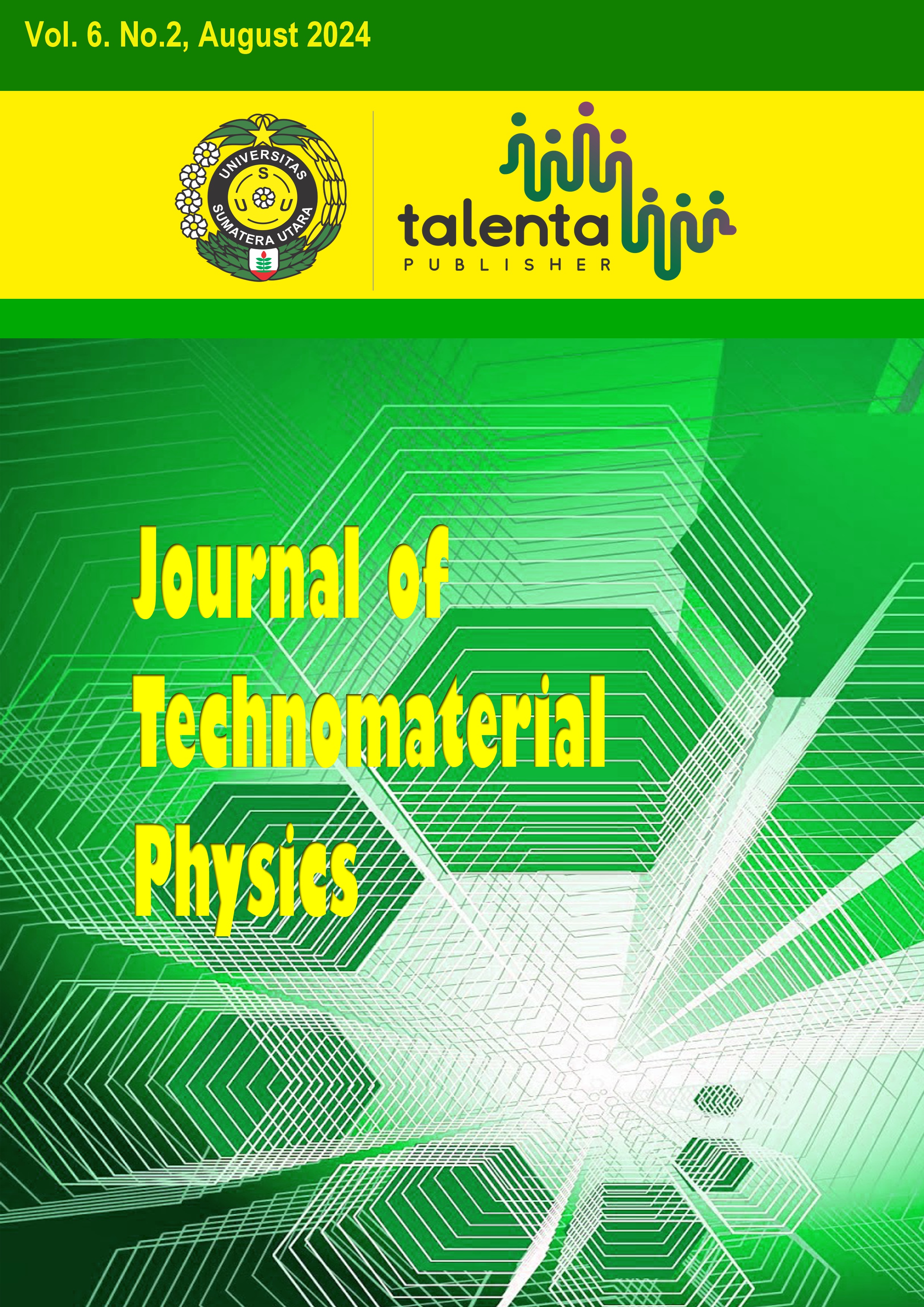Characterization of Low-Density Polyethylene (LDPE) Thermoplastics with Rice Husk Ash Nanosilica Filler Synthesized Using the Coprecipitation Method
DOI:
https://doi.org/10.32734/jotp.v6i2.17037Keywords:
Coprecipitation,, LDPE,, Mechanical Test,, Nanosilica Rice Husk Silica,, XRDAbstract
LDPE thermoplastics have been made with rice husk ash nanosilica filler, which is synthesized using the coprecipitation method. The nanosynthesis of rice husk ash silica was carried out with HCl 2M and NaOH 2.5M solvents with a ratio of 1:3. The synthesized nanosilica was then characterized using XRD and obtained an average size of 23.09 nm. Based on the results of XRF characterization, it is known that there is 92.99% SiO2 and the most abundant element, namely Si, 43.47%. The composition of each LDPE/nanosilica rice husk silica was varied (100/0, 98/2, 96/4, 94/6, and 92/8 % by weight), and mechanical properties in the form of tensile strength, elongation at break, and modulus of elasticity were tested using ASTM D638 standard. The results of the mechanical test were obtained with the optimum tensile strength value in the composition (96/4% by weight) of 10.53 MPa, the optimal elongation value at the break in the composition (100/0% by weight) of 201.5%, and the optimum elastic modulus value in the composition (96/4% by weight) of 226.57 MPa. The addition of RICE HUSK SILICA nanosilica as a filler is proven to improve the mechanical properties of LDPE thermoplastic in terms of tensile strength and modulus of elasticity compared to LDPE without filler material (100/0% by weight).
Downloads
Downloads
Published
Issue
Section
License
Copyright (c) 2024 Journal of Technomaterial Physics

This work is licensed under a Creative Commons Attribution-ShareAlike 4.0 International License.











